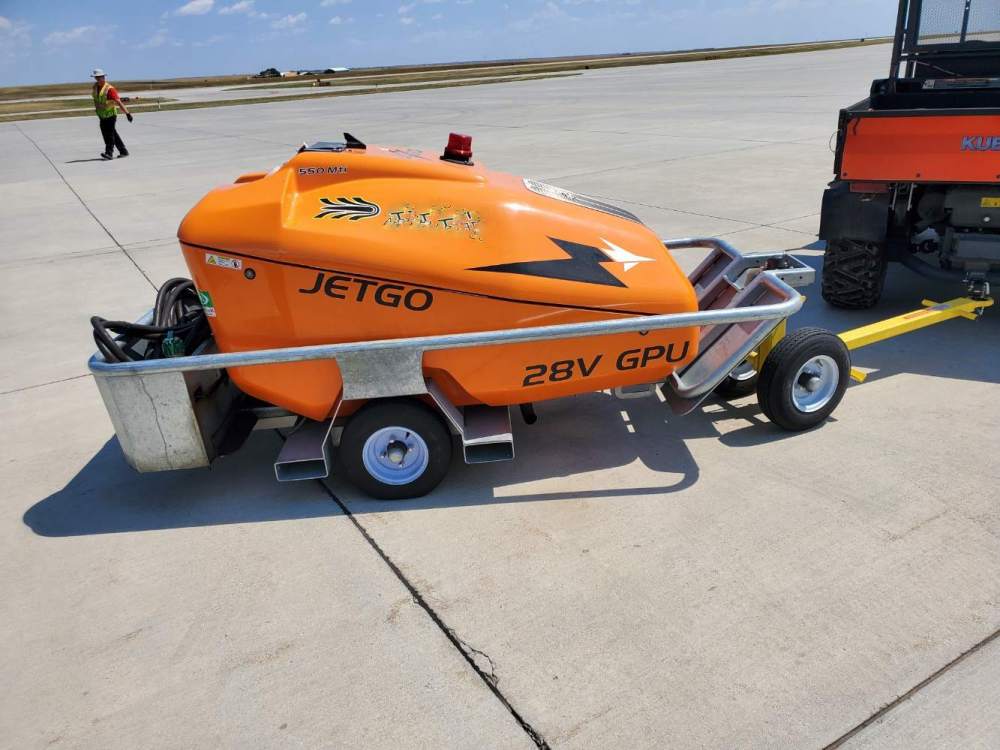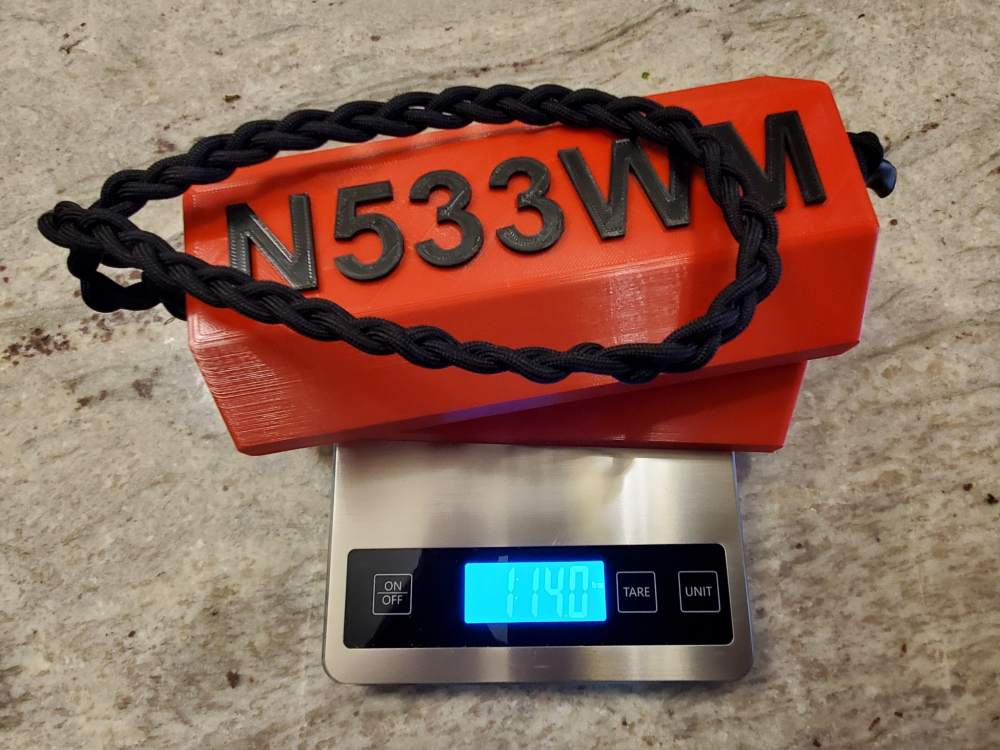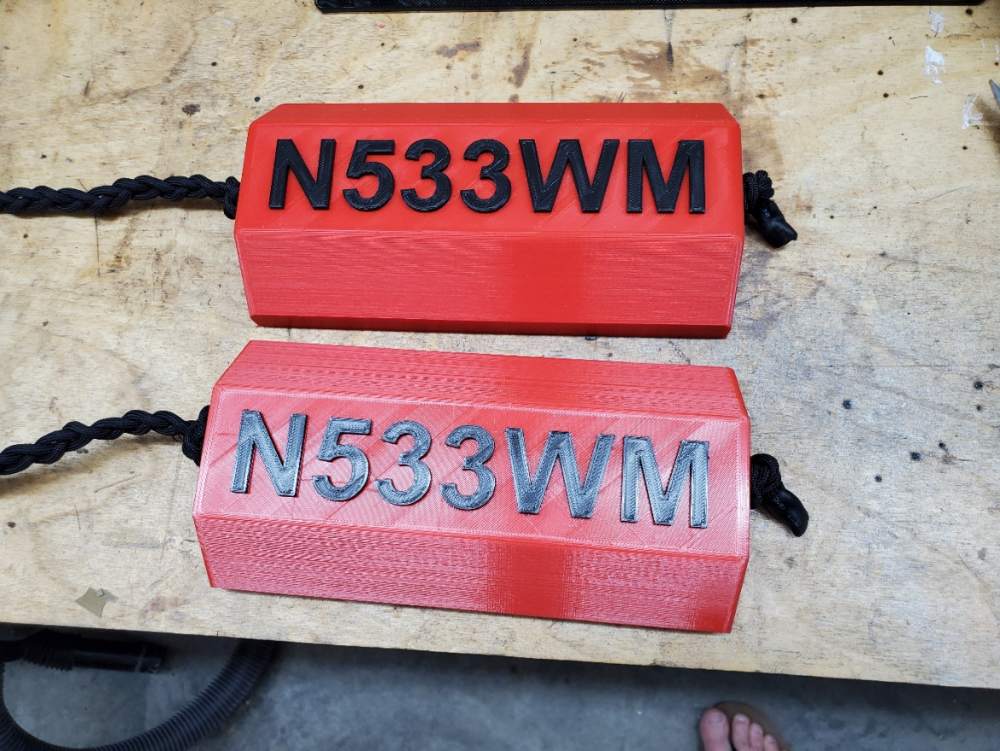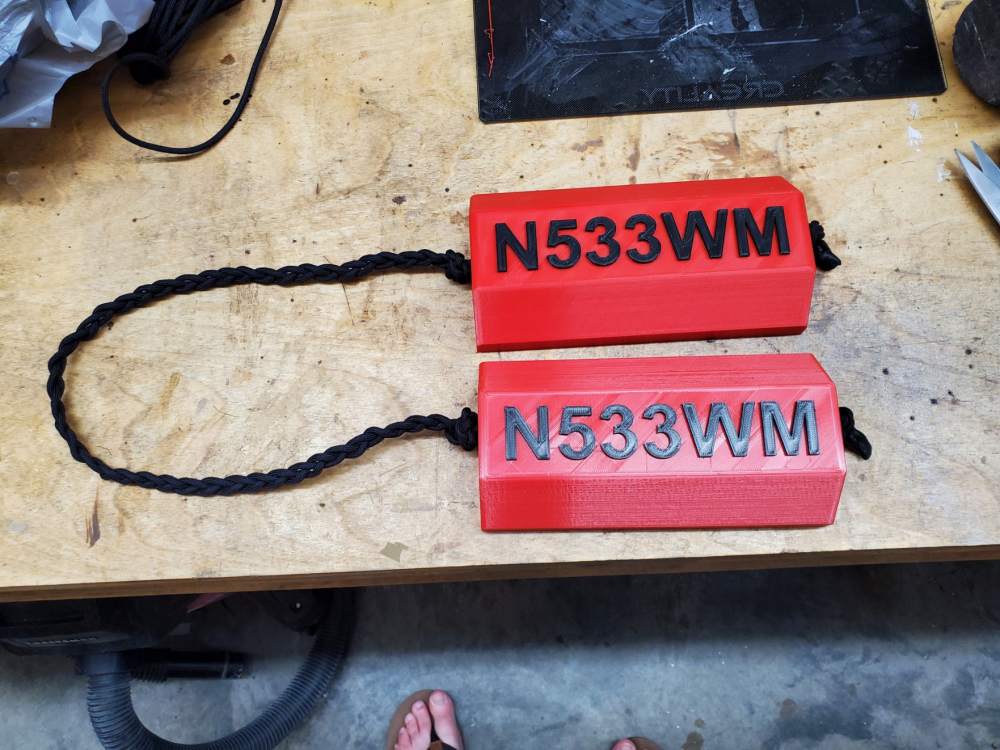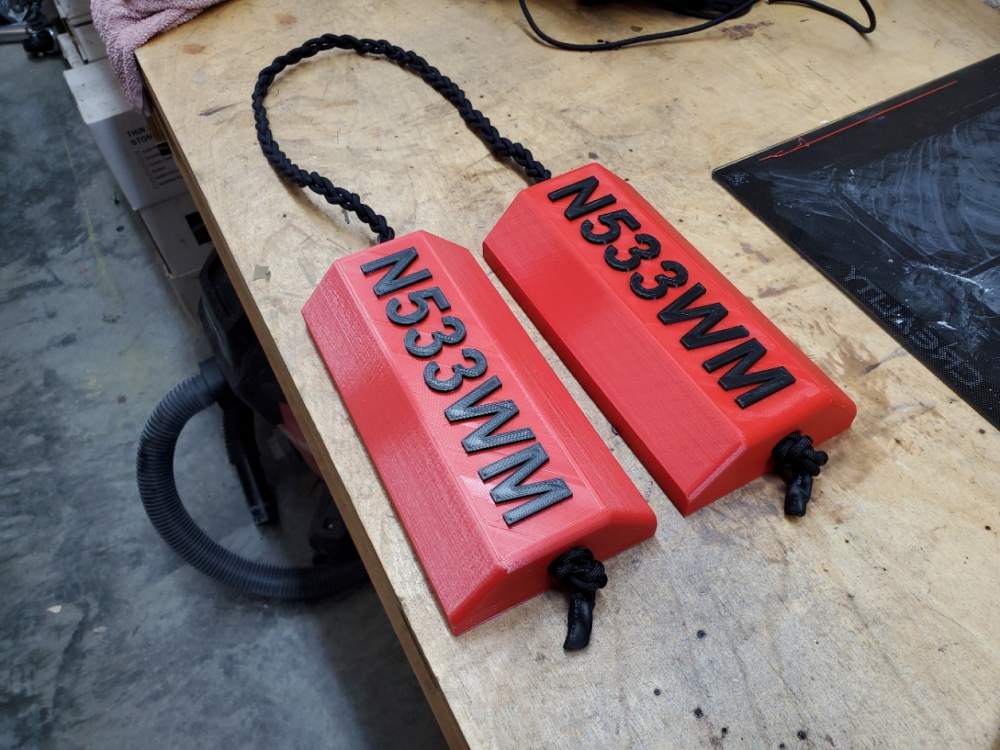-
Posts
735 -
Joined
-
Last visited
-
Days Won
5
Content Type
Profiles
Forums
Blogs
Gallery
Downloads
Media Demo
Events
Everything posted by Z W
-
You will be paying by the hour, essentially, for the avionics work. They may give you a flat quote but they're basing it on their shop rates. The answer to your question depends on what you're doing. If you're just re-arranging existing old instruments into a standard 6-pack, maybe $2-5k for labor, depending on how many wires they have to extend / cut / remove etc. This makes little sense to do with the cost of modern alternative gauges. If you're going to send the plane in for major panel surgery, you may as well add some solid-state digital AHRS if your plane doesn't have it. If you want to add a couple of GI-275's to replace a legacy King attitude indicator and HSI, which makes a lot more sense while you're at it, you'll still probably pay $2-5k for labor. To add a modern GFC500 autopilot while you're doing it, add another $5-7k for labor to that. To add a GTX-345 or equivalent full-featured ADSB transponder, another $2k or so for labor. With the cost of the new Garmin and Avidyne units coming down lately, it quickly gets hard to justify repairing old King AI's, HSI's, and autopilots, which are getting more expensive and difficult to repair as they break.
-
An update to this I found during a recent flight: On the G500TXi, you can configure custom "alerts" for CHTs. Go to the engine page, then in the settings menu at the bottom, a few pages in, you can set a custom CHT maximum temperature and enable the alert. Mine was set to 380, which I probably did setting the thing up, but I had not also clicked the button to enable the alert. Once enabled, if CHT on any cylinder goes over your set value, an "A" (for alert) shows up at the bottom of the G500TXi, on any page, and flashes at you. This is very handy and removes the need to check the engine page periodically in cruise to make sure you don't need to adjust your cowl flaps. For me, at least, this removes the need to have highest CHT displayed at all times on the primary engine information system page. As long as there is no alert I know they're all under 380. You can also set alert values for TIT and maybe some other things.
-
In case this inspires anyone else, here is the placard I now have on the outside of the plane: https://www.ebay.com/itm/123241539555?chn=ps&_trkparms=ispr%3D1&amdata=enc%3A1anv6JMzAQ0Ged6JNGJg6vQ22&norover=1&mkevt=1&mkrid=711-117182-37290-0&mkcid=2&itemid=123241539555&targetid=1262376588856&device=c&mktype=pla&googleloc=1020526&poi=&campaignid=12873834640&mkgroupid=120270032814&rlsatarget=aud-622027676548:pla-1262376588856&abcId=9300536&merchantid=112038953&gclid=Cj0KCQjw18WKBhCUARIsAFiW7JzsYKUh-O6q8qsqwesVZneJPEDrGVN_6BP7K5sbWOCXMdIyB46X8yYaAt5rEALw_wcB Aircraft Spruce has a slightly different version: https://www.aircraftspruce.com/catalog/cspages/extpower12vdcplac.php?clickkey=8443 A low-cost way to maybe avoid a very expensive mistake.
-
On a return trip from a great vacation last month, full family on board, I stopped for fuel, halfway home after a 2.5-hour flight. After gassing up the tanks, and hitting the restroom, we all got back in the plane. I turned the key, and the prop ticked, but wouldn't turn over. I suspected either the starter or the ignition switch. The battery was replaced last April, and I had just landed without any low voltage warnings, so low battery seemed unlikely, but I asked if they would give me a jump anyways, because I figured that would be the easiest solution if it happened to work, and I only needed one more start to get home where my usual shop could take a look at it. A helpful lineman took me to the maintenance hangar to pick up this beast: Although I knew I had a 14-volt electric system, I did not notice the 28V sticker on this unit, and it did not occur to me that the unit would not be suitable for jump-starting a 14-volt plane. You may be able to guess what happened next. He fired up the diesel motor on the GPU and plugged it into the plane. I hopped in to see if the engine would fire. After about 5 attempts to crank over the motor, my lead-acid battery exploded with an audible thump, leaking acid through the drain hole installed for this purpose in the bottom of the battery box and belly of the plane: This ill-advised course of action destroyed the battery and all three relays between the battery and the starter motor. The starter motor was also toast, although it probably was before that. I had to fly all of us home commercial, and return 3 weeks later after they had finally chased down all of the problems to pick up the plane. The FBO involved, to their credit, fixed the damage and charged us only for the parts on the starter . The lineman apologized profusely to me, and said that he had recently used that cart to jump-start another Mooney that had a 24-volt electrical system. There was a "12-volt" placard on the plane, but it was inside the flapper door that covers the external power plug, and I guess he didn't see it. I did not even know the placard was there before this. Lessons I learned: 1. Understand your plane, and never assume a stranger on a ramp knows what they're doing. 2. Always verify your power source for a jump. 12-volt to 12-volt and 24-volt to 24- volt. No mixing and matching. Consider that Mooneys come in both varieties. 3. Continue my practice of planning fuel stops at locations with commercial airline service and on-field maintenance shops when possible. This is the first time I've had to use it, but I was very glad not to be at a small airport 2 hours from the nearest commercial ride home. It also was good that at least there were people there to help with the problems on a Saturday morning, instead of an unattended field with a self-service pump. 4. I have purchased a 12-volt DC external power placard and installed it on the exterior of the plane where it is more visible. Every plane with an external power plug should probably have a placard, in my opinion. While the lineman played a role, I bear some of the blame for this. I watched him do it all, and I was in the pilot's seat turning the key. I will not make that mistake again. I was aware of the issues of jump-starting 12-volt and 24-volt cars, but the issue was never brought up during my private pilot training with respect to planes, or at any other seminar or event I've attended since. I hope sharing this might help prevent one or more of you from having the same bad experience. Fly safe my friends.
-
Thank you for the tip on C&L Aero. We'll give them a call!
-
We have oxymiser-style cannulas and that helps. With two in the plane I would say we get 10-15 hours of flight on oxygen per bottle. I like the idea of the O2D2 though, because if it could be 20+, why not? At $80 per fill at home base it seems to make a lot of sense and would pay for itself in a few years. My only concern is clutter in the cockpit. Did you semi-permanently mount your O2D2, or is it just plugged in? Where did you run the lines?
-
A&P found a leak in the filler valve. Mooney part number 26875-76. Apparently it's hard to find. Working on a source. Looks like this: download.jfif
-
Thanks for the tip on Snoop. Have a bottle ordered. Thanks for the other tips as well.
-
After chasing oxygen system leaks for years in our M20K, we've decided the factory O2 system from 1982 needs an overhaul. Currently it has a very slow leak where if we fill the tank, it will leak down over a period of about three weeks. Usually just long enough to be empty before the next flight that oxygen is needed. After living with it for over a year, we've had enough. Also, ever since we got the plane, if you leave the valve in the "On" position after flight, the tank will be empty by the next morning. My understanding is this is from leaks most likely at the female Scott type fittings in the side panel in the cockpit, which are prone to leaking as they age. Anybody been down this road before? Thinking about telling the A&P to replace everything accessible from the tailcone, and if that does not fix the slow leak, then the lines from the tailcone to the cockpit and all those fittings are getting replaced. I believe if it's functioning properly you can leave the oxygen "On" all the time (or at least overnight) and not have it be empty the next day. May well have them replaced anyways. Any reason to install the Precise Flight oxygen system in a Mooney that has factory O2? It seems to be the only STC'd option: https://preciseflight.com/product/built-in-oxygen-system-for-mooney/ All I see is additional complexity and electrical components that will basically do what the factory gauge and manual valve already do. But I'm open to ideas. May also add a Mountain High O2D2 system while we're at it. Has anybody mounted one of these on the ceiling? If so, I would like a photo. Searches turned up pictures of some mounted on the center console above the fuel selector, but it seems like it would be in the way there, and it doesn't look like a super clean install. Any experience or guidance would be appreciated. Thanks.
-
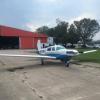
Mooney M20K 231 (252 FWF Conversion) as first airplane
Z W replied to redbaron1982's topic in General Mooney Talk
I have time in both a non-turbo (C model) and turbo (K model 262, like the one discussed here) Mooney. I would not go back to the NA engine. The turbo is not about speed, but convenience, comfort, and options. You can always climb to get out of turbulence, clouds, and/or icing. After a nasty, moderately-turbulent flight across Texas and New Mexico in a naturally-aspirated M20C, maxed out in altitude at 12,500 feet with bumps all the way to the ground, my wife appreciates the turbo and won't go back. If there's a tailwind you want to catch, you go up high and catch it. If you want to take your family of four into the mountains and depart at gross weight on a hot summer day, you just do it. No leaning for take-off, no need to study the POH and do density altitude calculations (you may use a couple hundred more feet than normal but generally its a no-factor). You don't have to spend every flight way up high to enjoy the turbo. It's there for the 10% of flights where a NA plane might be uncomfortable or even unsafe. It costs a little more in maintenance, but I'm betting less than 5% of the total cost of owning the plane, and we've replaced our entire turbo system at this point. I'd do it again. Just my two cents. -
In your situation, I would get the G5 or GI275 and GFC500. You won't regret it. The autopilot, especially with a yaw damper, really transforms the plane, and both it and the standby will connect to the expensive Garmin items already in your panel very nicely. I think you'll regret spending the kind of money and downtime required for a new autopilot and not getting the GFC500. Most autopilots seem to last 30-40 years. You don't want to have to do it again.
-
Not a G3X, but on our G500TXi, you cannot do what you want. It takes two taps to toggle the screen to see the CHTs and EGTs from the map display. I have heard there is a firmware update that addresses this problem by always displaying the highest CHT in numerical format on the main EIS display. Dropping the plane in for the update is on my to-do list. That would largely fix the issue. I do find myself always having to tap over to the engine page to make sure the CHTs haven't crept up in cruise. As you know I'm sure, sometimes they do, and you have to crack the cowl flaps a bit more. I don't know that I need all the CHT's and EGT's all the time, but the highest one is important to keep an eye on. I keep it under 380dF. This is the one issue that makes me wish just a little bit that we'd replaced the old, failing JPI 930 with another JPI unit for full-time engine data display, although to be honest, tapping twice to check the engine data every so often really is not that big of a deal.
-
Quotes about a year ago for a TSIO-360-MB overhaul ranged from $60k-$85k. The $85k was with all the extras (turbo, exhaust, hoses, etc.) FYI. With the Mooney, the good news is, your fuel bill will usually be less than the hotel and rental car at your destination. Always feels good.
-

How do you Take Advantage of Speed Brakes on Approaches?
Z W replied to MBDiagMan's topic in Vintage Mooneys (pre-J models)
I prefer not to use them on an instrument approach once I'm past the initial approach fix. I was taught that instrument approaches are best done stabilized with minimal configuration and power changes except at a pre-defined time, i.e the final approach fix, where the gear comes down and takeoff flaps are applied. In my mind, adding another button to push for speed brakes, and a large configuration change, is not helpful during a typical approach. Speed brakes add a lot of sink when applied, and similarly take it away when stowed, each of which is going to result in large dramatic changes in pitch, airspeed, and/or vertical speed. Not what you want when you're trying to capture and hold a glideslope for a stabilized approach. If ATC asks for best forward speed, you could do what Larryb says and carry a lot of speed until the final approach fix, then pop speed brakes, followed by gear and flaps. I don't like being rushed and would likely say unable in a real IMC approach, but it's fun to do while practicing in clear air, or while on the visual. The best use for speed brakes that I have found is in the cruise or en-route phase of the flight. ATC holds you high and dumps you at 1000 FPM descent required to hit the runway? Pop the brakes, pull the throttle, and point the nose down, and you can do it easily. Not recommended with non-pilot passengers or anyone with a head cold. Add gear at the top of your descent and 1500 FPM or more is possible. I also use them during long descents in the yellow arc if you start hitting some bumps. Pop the brakes and you're immediately back in the green airspeed range. Good for passenger comfort and safety. Also good when you're trying to duck under a cloud layer or drop through a hole in the clouds and stay visual. I was practicing short field landings the other day and was thinking there is probably a use for speed brakes there. They could be used if you end up high on final approach and are trying to land short. Other aircraft use a slip in this situation, but those are not recommended in my K with flaps and while slow, so brakes could be a substitute. Something I need to practice. -
Still learning and getting used to our GFC500. I realized after landing the other day that I had done so with the YD on. Didn't even notice until turning off the runway, although there was not a lot of cross-wind. It appears to be a non-event, which is good design by Garmin I suppose. Turning off the YD is going on my pre-landing checklist. It is very easy to forget, since if you press the "AP" button on the control unit to disconnect the autopilot, the YD stays on. As someone else said above, if you use the "AP Disconnect" button on the yoke instead, that turns off the YD as well. I think I will make it my practice to always use the button on the yoke and not touch the AP button on the control panel, unless I make a conscious decision that I want the YD to stay on. Coming from our old KAP150, there was no difference, and for no reason at all, I always used the control panel in the dash and not the button on the yoke. I guess I have an old habit to break.
-
I had the same experience as you. I was taught 32" / 2500 RPM, pitch for 500 FPM climb, as a "cruise climb" setting, to be set after climbing through 1,000 feet AGL. I still use that for larger altitude changes in cruise, but no longer for the initial climb. After reading it here many times, for initial climb, I have switched to full power climbs to final altitude. For me that is 36" and 2700 RPM. Your TSIO-360-SB engine has different max numbers (39" and 2600 RPM I think?) and 10 more HP, but I believe the consensus is the same. At full power, set pitch for 120 KIAS, which is optimal attitude for engine cooling. When light, and/or on a cool day, you will climb at 1000 FPM or more, and compared to the "cruise climb" settings, 1) your CHTs will be lower, 2) your ground speed will be higher during climb, reducing total flight time, and 3) you will use less total fuel to reach your maximum altitude. It's also simpler, because you don't touch your throttle, prop, or mixture after takeoff until leveling off, which decreases pilot workload, and possibly decreases the chance of an engine or cable failure while near the ground. Better in every way, in my opinion. Whoever wrote the manual knew what they were doing in this case.
-
Before our panel job, we had a very old 930 that was starting to fail intermittently. We chose to remove it and go with the 500TXi, and for redundancy, kept the factory RPM and MP gauges on the far right side of the panel. Thing I like most about it is having your EIS right in front of you on the 500TXi. Your entire scan is within that 10" frame. Great for approaches and changing power settings while in the soup or under the hood. It's a very clean setup and I would do it that way again.
-
I guess I'm about as near as you're likely to find to Bolivar (M17). You may want to call Lake Aviation Center, http://www.lakeaviationcenter.com/, and ask Don Thibodeau, their A&P, if he'll make the drive over and put eyes on it for you. He maintains our Mooney and has done a good job. They're based at Camdenton but it's about a 1.5 hour drive to Bolivar.
-

Best Airport/FBO for Visiting St. Louis, MO?
Z W replied to 1001001's topic in Miscellaneous Aviation Talk
KSUS is great and easy, and a no-brainer if it's the closest to your destination. Million Air has always treated me well. Nice courtesy cars. Echo what others have said about KCPS, it's fine too and a little closer to downtown if that's where you're going. -
I debated back and forth between matching the plane's color scheme, and going with red for high visibility. In the end, I went with the red. Matching colors would be just as easy to do, though, if you're more confident than I am in your ability to remember to remove the chocks before taxi.
-
I made some wheel chocks, and they turned out better than expected. I 3D-printed these on a Creality CR-10. The rope is 3-strand braided paracord, with the ends sealed with electrical heat-shrink. Any 3/8" rope would probably do. They weigh in at just under two pounds, with the rope. I thought I would share the idea and files in an attempt to give back a little to this community that has helped me so much. I don't post much, but I read a lot. Details: These are PLA plastic, printed at 50% infill. That's the wrong material, but I had planned to go through several iterations, and I had a spare roll of PLA to start. They are nice enough I'm just going to see how long they last. The next set will be ABS or PETG. This was my first attempt at a filament change (red to black for the letters) and it was really easy. The print took about two and a half days, and used almost a full 1kg roll of filament. I designed them in Fusion 360. Pictures and files to follow. I removed my N-number from the files. Adding your own is pretty easy though. I got started on this because I bought some chocks off Amazon, but they were very heavy and bulky. I wanted something light-weight, durable, high-vis, and with the plane's N-number on them so maybe they won't wander away. I want them to live on the hat rack in the back and always be available for short stops, fueling on slight inclines, etc, without eating into the useful load. At under 2 lbs, I think they fit the mission. I'm very happy with how they turned out, and I hope someone else finds this useful. Fusion 360 File: https://1drv.ms/u/s!AjJPoJhv9yifh4hTLxSOGN5CCDkJYw?e=7X6jQn STL File: https://1drv.ms/u/s!AjJPoJhv9yifh4hVrUax1fYaCavXPw?e=1o7qus
-

Justifying cost of a complete glass panel.
Z W replied to Dick Denenny's topic in Avionics/Panel Discussion
Hah, the first vacuum attitude indicator failure was in a 68C model. Then I moved to our K which had a lot of...questionable...wiring behind the panel when we got it. Shops hated working on it. When we finally gave the avionics shop the green light to rip it all out and go glass they were thrilled. Happy to help with some mental gymnastics to justify spending money on an airplane, but I do enough of that with one, no need for half of another C model. Sometimes I wish I had kept our C though, it was a great plane. Better than the K in some ways, like short field ops, grass strips, and practical inability to load it over gross weight. I'd put a glass panel in that plane if I still had it. -

Justifying cost of a complete glass panel.
Z W replied to Dick Denenny's topic in Avionics/Panel Discussion
You don't have a $65k plane. Maybe that's what it would sell for, or what you paid for it, but in fact it's a $750k-$1m plane (in today's dollars), depreciated all the way down to $65k. So really, all you're doing is spending a very reasonable amount to maintain the systems in your million-dollar investment, and saving lots of money compared to buying a new one. On a more serious note, I've flown old panels full of faulty steam gauges and old wiring. I've had a vacuum AI gyro die, luckily in VMC. I've had an electric turn coordinator die shortly after takeoff on a long cross-country IFR, again luckily still in VMC, that resulted in climbing to 17k to stay VFR, with family on board, adding significant stress. I've had an HSI stop working on another long cross-country, in VMC (thinking about this, I've sure been lucky on my instrument failures), resulting in no autopilot and about 8 hours of solo hand-flying, and having to stay VMC dodging widespread rain and clouds on the way back. This is all in about 350 hours of total time. The safety concerns are ultimately why we redid our panel in glass. Any plane I own in the future is getting modern glass without gyros, a digital autopilot with envelope protection, and at least two redundant AHRS with battery backups, even if the panel upgrade is all I can afford. I am of the opinion that any IFR plane should have those features now, considering their cost and availability, as a safety concern. -
Thanks for posting the update, Paul. I've been silently following with interest. The speed brakes and entry step are the last vacuum-operated items in our plane. We even bought the electric step kit, but after seeing how much money and work it would be to do the speed brakes, the step kit is sitting on the shelf until those fail. I would really like to hear about how the new 220 HP engine does on the takeoff roll at your new max gross weight, after you've finished dialing it in.
-
When I moved from a C to a K, I noticed the K model being bigger, heavier on the controls, and as you would expect as a result, harder to slow down. The K is less forgiving of carrying extra speed on final. Easier to get behind the airplane with the K. Overall it was an easy transition though, the planes handle mostly the same. Just be sure you're 80 knots short final, 75 knots over the fence, especially when light, and it will land just fine. Adding additional engine management may make it worse, although I have no experience in a 231 with the LB engine. From what I've read here, for takeoff, you can't firewall the throttle, but instead add throttle to max MP (40 I think?) before starting your takeoff roll. If you firewall the throttle you can overboost. Without the intercooler, I have read you may become limited by TIT temps up high, depending on temperature and altitude. 1650 is max TIT and you must reduce power to stay below it by going either rich or lean of peak. Good luck and have fun!




